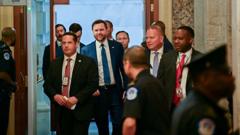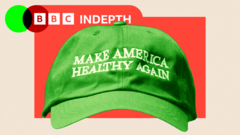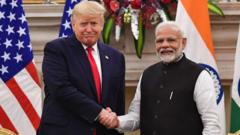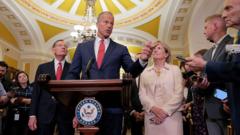Trump's recent executive order seeks to address the historically high price of prescription drugs in the United States. Citing disparities between American drug costs and those of other nations, he emphasizes rapid price reductions but faces skepticism from experts about its real impact. The US healthcare system's complexity, influenced by both private and public insurers, makes substantial change challenging. The order proposes the ‘Most Favoured Nation’ status to reduce prices and suggests direct sales from companies to consumers, yet its success depends on multiple factors, including industry cooperation and potential political pushback from pharma lobbyists.
Trump's Executive Order Aims to Tackle Skyrocketing US Drug Prices

Trump's Executive Order Aims to Tackle Skyrocketing US Drug Prices
In an ambitious move, President Trump signs an executive order intended to lower prescription drug costs in the US, but uncertainties loom.
US drug prices are notoriously high due to the fragmented healthcare landscape, where negotiations and cost analyses differ significantly from countries with centralized healthcare. For instance, a 2021 report illustrated that prescription drugs in the US can be two to four times the price of those in nations like Canada and France. Trump's initiative, labeled as one of the most significant executive orders, aims not only to curtail pharmaceutical spending but also to reposition the balance of pricing power toward consumers.
Despite the bold claims, analysts have expressed doubts. Quick fluctuations in stock prices for pharmaceutical companies post-announcement indicated investor uncertainty, while some experts noted that existing price discounts might be presented as compliance. There’s also apprehension that drug companies might withdraw from international markets to protect domestic profits. Additionally, political dynamics, including potential opposition from the pharmaceutical industry, could stymie efforts for change.
As the move garners various reactions—both support and criticism—its effectiveness will ultimately hinge on the administration's willingness to enforce robust regulations while maneuvering through the intricate political landscape of healthcare reform. With drug prices consistently at the forefront of public concern, any progress toward reducing costs could benefit a large portion of the American population.
Trump's latest order signals a potential shift, but lasting change will demand a concerted effort across multiple sectors.
Despite the bold claims, analysts have expressed doubts. Quick fluctuations in stock prices for pharmaceutical companies post-announcement indicated investor uncertainty, while some experts noted that existing price discounts might be presented as compliance. There’s also apprehension that drug companies might withdraw from international markets to protect domestic profits. Additionally, political dynamics, including potential opposition from the pharmaceutical industry, could stymie efforts for change.
As the move garners various reactions—both support and criticism—its effectiveness will ultimately hinge on the administration's willingness to enforce robust regulations while maneuvering through the intricate political landscape of healthcare reform. With drug prices consistently at the forefront of public concern, any progress toward reducing costs could benefit a large portion of the American population.
Trump's latest order signals a potential shift, but lasting change will demand a concerted effort across multiple sectors.





















